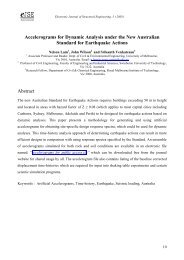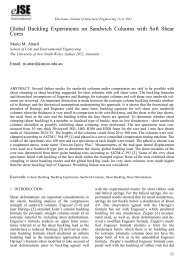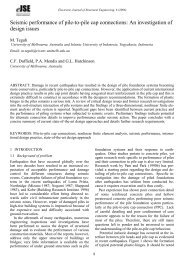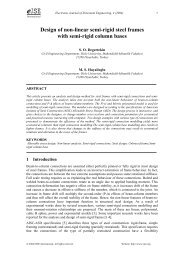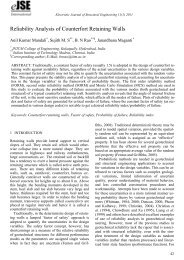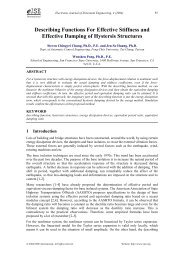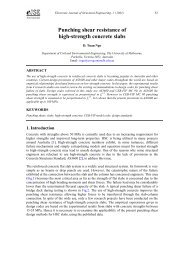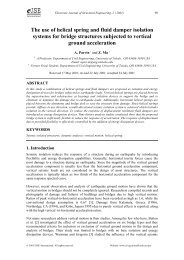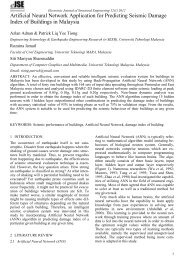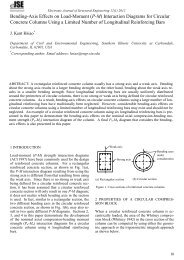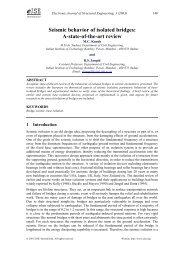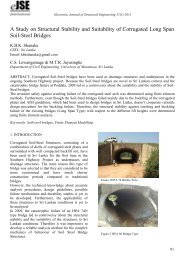Create successful ePaper yourself
Turn your PDF publications into a flip-book with our unique Google optimized e-Paper software.
Step 18: Reviewing Deformed Shapes<br />
In this step we will demonstrate methods for reviewing the deformed shapes and displacements.<br />
1. Click in the window labeled 3-D View to make sure it is active. Note when the window is<br />
active, its title bar will be highlighted.<br />
2. Click the Display Static Deformed Shape button , (or select Show Deformed Shape…<br />
from the Display menu). The Deformed Shape dialog box appears.<br />
3. In this dialog box:<br />
• Select the EQX Load Case from the Load drop-down box.<br />
• Select the Auto scaling option in the Scaling area.<br />
• Check both the Wire Shadow and the Cubic curve boxes in the Options area.<br />
• Click the OK button to display the deformed shape.<br />
4. Click the Start Animation button , located in the status bar at the bottom<br />
of the <strong>SAP2000</strong> window, to animate the deformed shape.<br />
5. Click the Stop Animation button , located in the status bar at the bottom of<br />
the <strong>SAP2000</strong> window, to stop the deformed shape animation.<br />
6. Click the Right Arrow button , located in the status bar at the bottom of the screen, to<br />
view the next deformed shape, based on the EQY static load.<br />
Note: When viewing deformed shapes, the right and left arrow buttons, located in the<br />
status bar at the bottom of the screen, provide an easy way to view the next (right<br />
arrow), or previous (left arrow) deformed shape. You can easily cycle through all of<br />
the load cases in this manner.<br />
7. Right click on any joint in the 3-D view to bring up a dialog box with displacements for all<br />
six degrees of freedom (UX, UY, UZ, RX, RY, RZ) for that joint. When done viewing these<br />
displacements, right click another joint, or left click anywhere to close the dialog box.<br />
8. From the Display menu select Set Output Table Mode… to display the Select Output<br />
dialog box.<br />
9. All of the load cases in the Select Output dialog box should be selected (higlighted). If they<br />
are not, click on each one while holding down the Ctrl key to select them. Click the OK<br />
button to accept this selection.<br />
Note: If we wanted to, we could select only one, or a few load cases, instead of all of them.<br />
<strong>SAP2000</strong> <strong>Web</strong> <strong>Tutorial</strong> 1 75



